PR/IR
News
News
News
- Date
- 2015.07.25 00:00
I need to begin with a disclaimer: if you’re staring at a screen right now, you don’t need the product featured in this article. But trust me, it’s worth a look all the same.
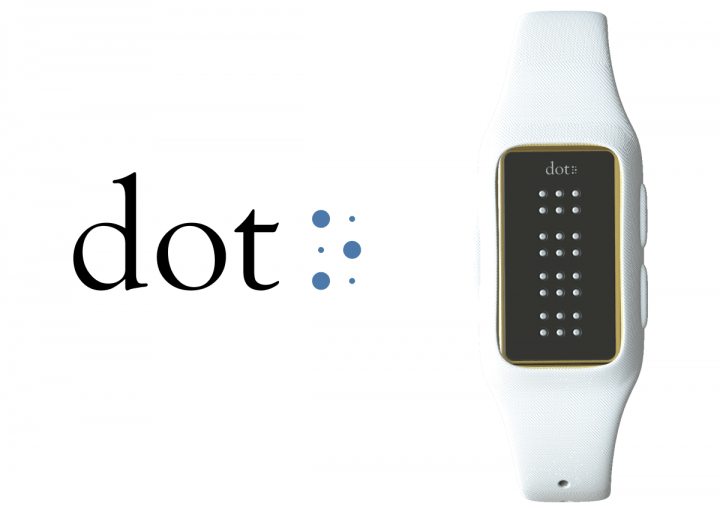
The smartwatch market has exploded over the past few years. In fact, reports show that smartwatch sales have increased an astronomical 457 percent in the last year alone, a figure that can be attributed to the Apple Watch. Since its release in April, Apple’s flagship wearable has captured a full three-quarters of the market, reaching about 4 million units sold to date. One thing you could safely assume about almost every one of those customers, though – nearly all of them can see.The World Health Organization estimates that there are 285 million people with severe visual impairment around the world, of whom 39 million are completely blind. Among them, literacy is a serious issue because access to Braille education and materials is limited. Even for the literate blind, reading is laborious – one Braille Bible comes in 40 volumes, for example – and remains largely limited to the printed word. Active Braille technology, which displays changing Braille text in real time, typically cost upward of US$3,000 and haven’t changed much over the past decade. Dot is a South Korean startup that believes the active Braille market is ripe for disruption. It has produced an active Braille smartwatch that’s a low-cost education and communication tool for the blind. With it, Dot hopes to return equal information access to a demographic that has been left behind in the age of real-time digital text.
A tactile experience
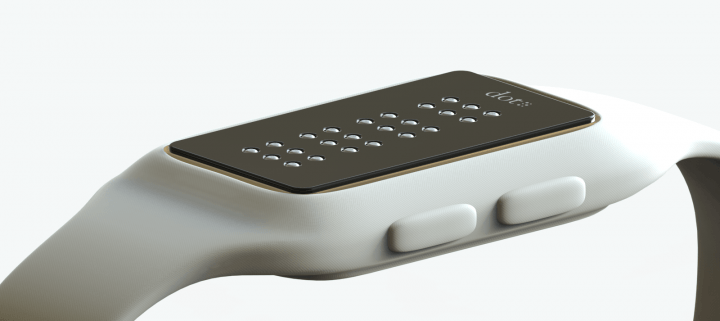
The Dot smartwatch appears, at first glance, like one of the many screenless wearables on the market already. You might mistake it for a white Fitbit from its telltale bulge where the hardware module rests atop the wearer’s wrist. That module houses four “cells” of six active dots each – enough for four Braille characters to be displayed at once. The device can be calibrated to display new characters at speeds ranging from a glacial 1 hertz to a breakneck 100 hertz; development has yielded a battery life of 10 hours, which will give average users five days between charges, Dot says.
The device is based on haptic technology, which provides feedback or information in real time through touch. By linking to any Bluetooth device, the Dot smartwatch can pull text from applications like iMessage using voice commands. Co-founder and CEO Eric Ju Yoon Kim says that Dot gives users the chance to read text their own way.
“Until now, if you got a message on iOS from your girlfriend, for example, you had to listen to Siri read it to you in that voice, which is impersonal,” Kim explains. “Wouldn’t you rather read it yourself and hear your girlfriend’s voice saying it in your head?”
As a wearable, Dot is still without competition. Current industry leaders produce hardware in the form of keyboards with active Braille cells that connect to computers via USB, with price tags in the thousands of dollars. Kim tells Tech in Asia that when the Dot smartwatch goes on sale in the United States this December, it will retail for less than US$300.
Going global
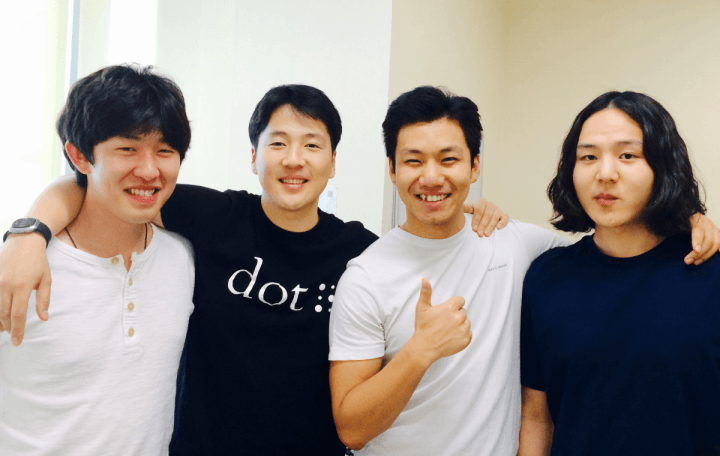
(L-R): Lead designer Mason Joo, CEO Eric Kim, CTO Ki Sung, and software engineer Juhwan Lim.
Kim founded Dot with Titus Cheng, a classmate from the University of Washington. The team they built in Seoul includes specialists in hardware, software, and design. In its first round of seed funding, Dot raised US$100,000 from the ActnerLab accelerator and an additional $500,000 from the South Korean government’s Tech Incubator Program for Startup (TIPS). The company will begin its second round of seed funding in August with a goal of raising US$1 million, and it’s hoping for international investors to help promote the company’s products overseas. Though the smartwatch will go on sale in the US and Canada first, Dot is trying out other applications for its active Braille modules in South Korea. In a push that Kim is calling “public Braille,” the company has installed modules at ATMs and in train stations. Like the smartwatch, these modules can be programmed to display information updated in real time, such as account balance information or a subway schedule.
“The Braille at ATMs currently tells you, ‘This is an ATM,’ which isn’t super helpful,” says Kim. “I think these sorts of public places, and the public sector in particular, could become our largest market in the future.”
That means expanding to other countries like Japan and China. Japan has a strong history of updating infrastructure to reflect the needs of its disabled citizens, as evidenced by the country’s ubiquitous tactile paving. China accounts for nearly one-fifth of the world’s blind population and boasts a rapidly evolving public infrastructure. Kim sees huge growth potential in both markets and says Dot’s next few hires later this year will likely reflect that.
Educating a clientele
Kim admits that part of the challenge that lies before his company is creating a broader demand for the product. Unlike Apple or Samsung, Dot has an immediate, vested interest in promoting literacy as a means of increasing its number of potential customers. By many accounts, Braille literacy has actually fallen over the past half-century; Kim attributes that to the lack of effective educational tools. “90 percent of blind people become blind after birth, and there’s nothing for them right now – they lose their access to information so suddenly,” says Kim. “Dot can be their lifeline, so they can learn Braille and access everyday information through their fingers, which is the goal of Braille literacy.” Everyday language has some existing haptic support in the form of single-line active Braille devices, but Dot is concerned that education requiring complex text and diagrams, like mathematics, is still off-limits to the blind. To solve that, the company is also developing a tablet device to display multi-line text, graphs, and shapes. Native educational apps could be part of Dot’s next developmental phase.
Making waves
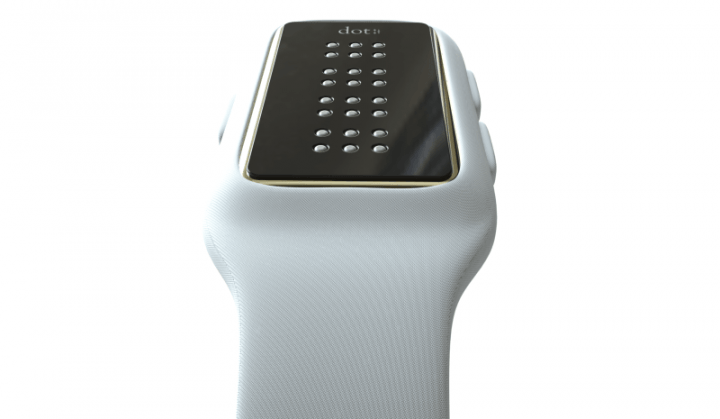
Dot is starting with only 10,000 smartwatches for its release this December, but the company is poised to take advantage of an underdeveloped market. The Dot team has just welcomed Dr. Dong-Soo Kwon of KAIST, South Korea’s top science and engineering university. He adds 54 patents in haptic technology to Dot’s existing five, providing a strong head start over potential competitors for the company, founded only one year ago.Those patents might also be a ticket to deals with larger companies. Smart device makers like Apple and Samsung have experimented with haptics to improve the way their models vibrate, and Kim says that Dot hopes to innovate products meant for the sighted as well. Dot’s primary mission remains information accessibility for the blind. Kim has plenty of ideas for how their four-cell module can grant the blind access to things that have gone digital, like microwaves or rice cookers. He wants to bring the blind up to speed on the same advances the rest of us enjoy. “Every time technology moves forward we see more real-time information, but for the blind, that’s a widening discrimination gap,” explains Kim. “We are solving that information discrimination with the equal accessibility the Dot smartwatch provides.”

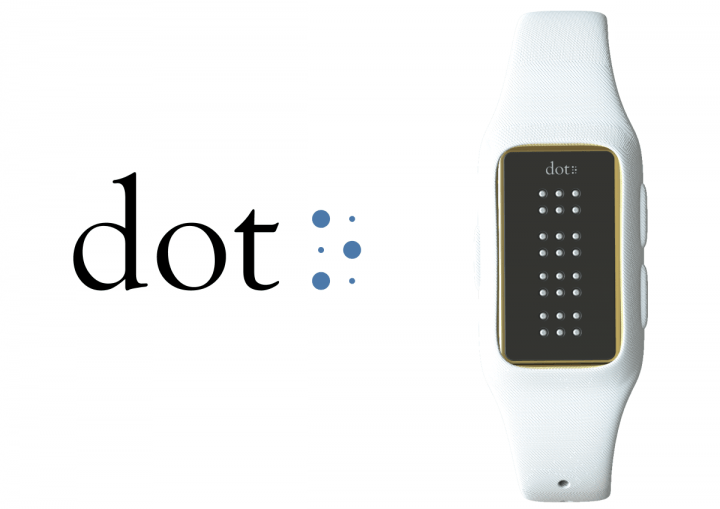
 Prev
Prev
 Next
Next









